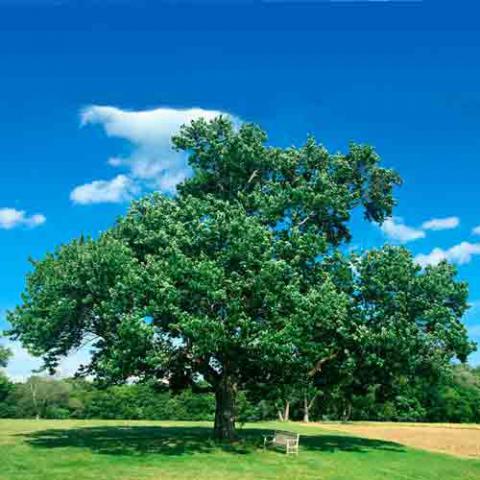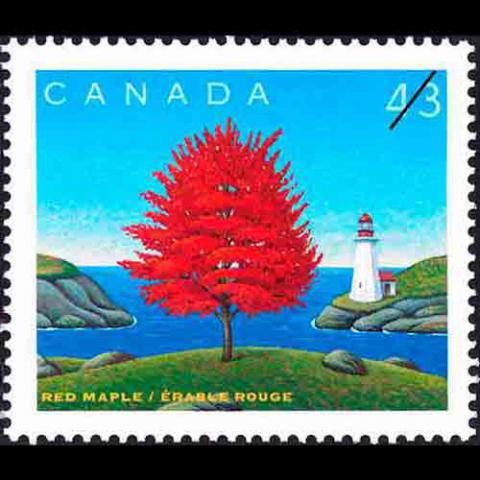Genus species: Acer rubrum
Series: Maple Trees (Canada 1994)
Quantity: 1,250,000
Perforation: 13 x 13.5
Printer: Canadian Bank Note Company, Limited.
Creators: Designed by Dennis Noble.
On June 30, 1994, Canada Post Corporation will issue a miniature pane of 12 stamps celebrating Canada Day. This year's theme denotes maple trees, acknowledging the longstanding tradition of the maple leaf as a symbol of Canadian unity and identity. It played a symbolic role as early as 1860, when the Prince of Wales visited Canada. Members of the welcoming party decided to wear the maple leaf as the emblem of their native land. However, the ultimate confirmation of the maple leaf as one of Canada's most significant national symbols, came on February 15, 1965 when it was proclaimed as the main detail on the national flag. Today this symbol of Canadian identity flies proudly across the nation and around the world... the Maple Leaf Forever. Of some 160 species of maple trees found world-wide, only 10 indigenous varieties grow in Canada. The majority of maple trees grow in four of the eight Canadian forest regions: the eastern Boreal forest, as well as in the Great Lakes-St. Lawrence, the Acadian and the western Coast forests. None are found in the Territories, where coniferous trees or lichens are more common. A mixture of deciduous and coniferous trees make up a large portion of the southern and eastern forest regions. The Red Maple is located in the Great Lakes-St. Lawrence and Acadian regions as well as parts of the Boreal forest in Newfoundland. It bark can be boiled to obtain a brown-reddish dye. Species of the maple vary in height, shape, fall coloring and foliage. And not all give us the clear sap to produce world renowned Canadian maple syrup. Maple wood also has uses such as flooring, kitchen cabinets and bowling alleys. Its popularity with craftsmen stems from it being a hard wood which is resistant and wears well. In addition to handles for tools, it is used for flutes and recorders and parts of some string instruments. Dennis Noble's illustrations depict 12 settings, identifying 12 varied geographical regions of Canada. While most maples would not grow as isolated as shown, artistic license shows each tree to its full advantage.
Reference: canadianpostagestamps.ca
Shop now link: ebay.com (note: market availability)


